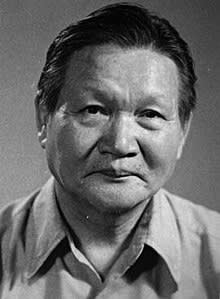Combining the sensibilities of Chinese ink and Western oil painting, Cheong utilised graphic outlines and mellow tones to elevate tropical daily life in Southeast Asia. He was inspired by his trip toBali in 1952, which led to his unique illustrations of doe-eyed female figures with elongated limbs and simplified forms reminiscent of wayang kulit puppets.Pushing the boundaries of abstract art, he explored space and form by further delving into sculptures and assemblages, showcasing his proficiency across mediums.
Cheong moved to Singapore in 1946 after graduating from Xiamen Academy of Fine Arts.Beyond Southeast Asia, his travels to Europe in the early 1960s spurred him to apply modern materials and techniques to bothAsian and Western subjects. During his two-year sojourn in London and Europe from 1961-1963, Cheong created a multitude of ink sketches inspired by nature and landscapes. These rich textures of these sketches were also adapted in his abstract oil paintings, which elegantly communicate his nostalgia for the vast landscapes of the West.
Cheong moved to Singapore in 1946 after graduating from Xiamen Academy of Fine Arts.Beyond Southeast Asia, his travels to Europe in the early 1960s spurred him to apply modern materials and techniques to bothAsian and Western subjects. During his two-year sojourn in London and Europe from 1961-1963, Cheong created a multitude of ink sketches inspired by nature and landscapes. These rich textures of these sketches were also adapted in his abstract oil paintings, which elegantly communicate his nostalgia for the vast landscapes of the West.
